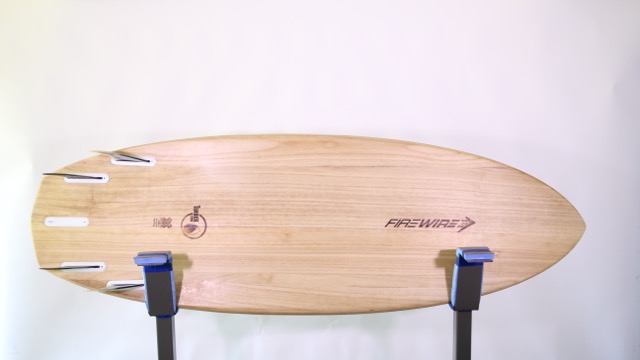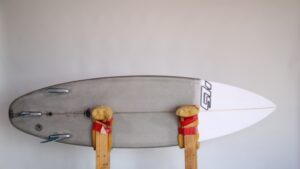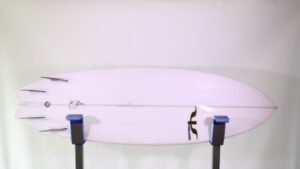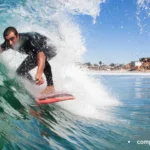Surfing can be an unpredictably thrilling adventure governed by the ocean’s tides. Surfers strive for that “perfect wave”, though what defines “perfect” may vary considerably between surfers.
Some surfers view surfing as a means of conquering towering, formidable waves; for others, surfing offers joy through dancing with the ocean’s gentler undulations. Firewire Surfboards has made waves in this regard by unveiling one of their finest creations–the Baked Potato board.
This board stands as an extraordinary testament to combining versatility with performance in conditions many would regard as unsurfable. Let’s dive deeper into an in-depth review of Firewire Surfboards Baked Potato, exploring its design, performance, and place among modern surfboards.
Contents
- 1 The Origins of Baked Potato
- 2 Design and Features
- 3 Performance in the Water
- 4 Comparison and Final Thoughts
- 5 FAQs
- 5.1 1. What distinguishes the Baked Potato from its Sweet Potato predecessor?
- 5.2 2. Is Baked Potato an Appropriate Recipe for Beginners?
- 5.3 3. How does the Baked Potato perform in small waves?
- 5.4 4. Can a baked Potato handle more giant waves?
- 5.5 5. What are the recommended fin setups for a Baked Potato?
- 5.6 6. How does the Baked Potato contribute to sustainable practices?
The Origins of Baked Potato
The Baked Potato has its roots in its predecessor, the Firewire Sweet Potato. This board was one of the first mass-produced grovelers, designed specifically for use in weak surf conditions while embodying radical departures from traditional board designs in its short, thick, and broad build.
Though revolutionary in concept, many surfers found it challenging to access all the potential of the Sweet Potato board, leading them to both love and dislike it.
Enter the Baked Potato. This board represents an evolutionary leap from its predecessor, refining and responding to feedback received from its users. While maintaining the core ethos of grovelers – performing best in minimal surf conditions – its design features have been tweaked for increased versatility and performance.
Design and Features
The Baked Potato features a more aggressive outline compared to its Sweet Potato cousin. Key differences include its slightly pulled-in nose and tail that clearly suggests this board can handle multiple wave types.
Reducing rail volume facilitates easier rail-to-rail transitions when surfing smaller waves where maintaining speed and fluidity is vital to staying fast and fluid.
One of the Baked Potato’s notable characteristics is its aggressive v-spine bottom contour, adding liveliness to an otherwise broad outline while aiding with holding better conditions. Furthermore, quad fin plugs have been moved back closer to the rail for enhanced hold in more powerful waves than is typically associated with grovelers.
Construction technology is also notable; Firewire’s dedication to sustainability can be seen through their use of Timbertek in building the Baked Potato surfboard. Surfboards themselves may not have an especially eco-friendly profile; nevertheless, this push towards using materials with reduced environmental impacts is commendable.

Performance in the Water
Surfboard performance in the ocean is its ultimate test, and the Baked Potato was specifically created with this in mind. This board excels at knee-to-tummy high, weak waves while remaining stable under flat conditions; yet its capabilities extend far beyond just these smaller waves.
Design modifications allow this board to handle larger and punchier waves with ease, giving it versatility that’s not usually found in boards in this category.
The Baked Potato’s wide diamond tail and reduced rail volume combine to produce an ideal blend of stability and responsiveness, providing it with the ability to catch almost any wave while still offering maneuverability that enables riders to maximize their ride experience.
The V-spine bottom contour effectively channels water for smooth sailing even on flat sections.
Comparison and Final Thoughts
Comparing the Baked Potato to other boards in the groveler category such as the Lost RV, Lost Puddle Jumper, and Nick Blair’s Cab Sav, it becomes apparent that Firewire has created a board which excels at catching waves in small to micro waves.
The Baked Potato’s design changes have not only addressed some of the limitations associated with Sweet Potato but have also shown us what can be achieved through groveler technology.
The Baked Potato is an attractive option for surfers seeking an adaptable board capable of exploiting even small waves while offering enough reserve to manage sudden surges. With its strong wave-catching performance and eco-conscious credentials, it stands out in the groveler segment.
Firewire Surfboards’ Baked Potato is more than just an update on its Sweet Potato counterpart; it stands as testament to surfboard design’s continual advancement.
No matter your skill level or environmental goals, the Baked Potato offers a distinct combination of fun, performance and sustainability.
So when you find yourself hiking over a dune only to discover waves pounding unexpectedly, having the Baked Potato with you will come in handy – ready for whatever the ocean throws your way.
FAQs
1. What distinguishes the Baked Potato from its Sweet Potato predecessor?
The Baked Potato takes its cue from its predecessor, the Sweet Potato, with an increased aggressive profile featuring slightly pulled-in nose and tail sections, reduced rail volume for easier transitions, and an aggressive V-spine bottom contour. These design changes make the Baked Potato more versatile in handling different wave conditions.
2. Is Baked Potato an Appropriate Recipe for Beginners?
The Baked Potato board is ideal for beginners due to its incredible stability and ease of catching waves. Its design provides comfort for surfers of all levels of experience – especially those looking to transition from tiny waves to larger waves.
3. How does the Baked Potato perform in small waves?
The Baked Potato excels at small, weak waves. With its design ensuring it catches virtually everything that hits its path, it makes an excellent choice when surf conditions are minimal. Plus its broad outline and V-spine bottom contour help maintain speed and glide even under flat conditions.
4. Can a baked Potato handle more giant waves?
Though intended primarily for smaller waves, the Baked Potato can actually handle larger and punchier conditions with ease due to its unique design features; such as its refined nose/tail configurations, lower rails, and quad fin setup.
5. What are the recommended fin setups for a Baked Potato?
The Baked Potato board can accommodate many fin configurations, and many surfers enjoy using a quad-fin setup for added hold and maneuverability in various conditions. Experimentation with different setups can help tailor its performance to personal preferences and wave conditions.
6. How does the Baked Potato contribute to sustainable practices?
The Baked Potato surfboard utilizes Timbertek construction from Firewire Surfboards – an eco-friendly alternative to conventional board production processes that reduces environmental impact while simultaneously increasing sustainability in surfboard design. While not completely eliminating environmental impact, Timbertek design represents an impressive step toward responsible surfing board manufacturing practices.








